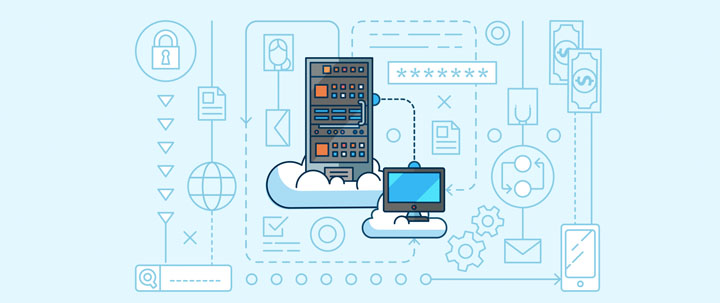There's no doubt that the market for MSPs will continue to grow, but there is some debate about how quickly. One study projects a global cap of $393 billion by 2028, while another more recent model expects MSPs to reach $557 billion by then. The momentum behind MSPs' growth has been driven by organizations of all sizes seeking to outsource their IT operations so they can focus on their core business.
Businesses increasingly recognize the benefits of using an MSP for their IT needs. These benefits include cost savings, improved scalability, agility, uptime guarantees, and increased security and compliance. But where does it go from here? Will MSPs continue to build on top of their current success, or is there a need to evolve? Let's take a look at some ways MSPs will likely need to change in the near future.
The Current State of the Managed Services Industry
In 2016, Amazon announced the introduction of AWS Managed Services, a platform that simplifies the process of managing and operating infrastructure on the cloud.
This represented a major step forward in IT outsourcing, enabling organizations to access all the benefits of using AWS without hiring an expensive team of in-house experts or spending time learning about complex technologies.
Since then, other providers have followed suit with their versions of managed services. These offerings make it easier for businesses to adopt new technology quickly and efficiently while avoiding costly mistakes that  can occur during setup or maintenance. On top of this, many managed service providers (MSPs) offer added-value services such as application management and security monitoring.
can occur during setup or maintenance. On top of this, many managed service providers (MSPs) offer added-value services such as application management and security monitoring.
The MSP industry saw a massive spike in demand, especially during the pandemic-driven exodus from offices and traditional on-premises IT infrastructure to working from home. Remote working has become a major priority for organizations of all sizes, leading to increased demand for services that can ensure reliable performance and secure access from any location.
Future Projections for the Managed Services Industry
The growth is not expected to stop. Those projections referenced above are just the beginning. Gartner analysts predict that IT spending will reach $4.6 trillion in 2023, an increase of more than 5% from the previous year. More notable for MSPs is the pressure being placed on CIOs. They are being squeezed to do more with less, finding creative ways to reduce costs while still meeting user demands.
Despite that, data shows that many focus on optimization instead of innovation and new technologies. Gartner found that the top area of investment for 66% of CIOs is cybersecurity, with data analytics close behind. Artificial intelligence and hyper-automation are still relatively underinvested, though that is expected to change soon.
This means that MSPs – while keeping one eye on the future – will be expected to focus on the present. Innovating is important, but with budgets tight and CIOs unlikely to take risks, they will need to prioritize proven services that reduce costs and increase performance in the short term.
What Should MSPs Focus on Moving Forward?
So then, what should MSPs focus on moving forward? The answer is simple: customer protection.
CYBERSECURITY
Organizations are becoming increasingly risk-averse when it comes to technology investments. The average cost of a data breach in the United States is over $9.4 million, and the number of attacks is only increasing. For many companies, cybersecurity is a field that moves too quickly for them to keep up with, so they turn to MSPs for help.
MSPs should focus on providing comprehensive cybersecurity solutions that cover every potential threat. This includes everything from managed firewalls and antivirus software to data encryption and breach prevention services.
Some providers even offer their security-as-a-service platforms, which bundle all of these functions into one package.
CLOUD-BASED SERVICES
Nearly $600 billion will be spent on end-user cloud services in 2023, a growth of more than 20%. This trend is being driven by organizations  looking to take advantage of the cost savings, scalability, and elasticity that cloud services offer.
looking to take advantage of the cost savings, scalability, and elasticity that cloud services offer.
MSPs should focus on providing comprehensive cloud-based solutions to meet their customers' needs. This includes managed private, public, hybrid, and multi-cloud environments.
They should also ensure they can manage multiple vendors in a single platform and provide analytics tools to track usage and performance. Once again, adopting cloud-based solutions has been driven by a risk management focus. Companies seek to reduce their costs and operational complexity while maintaining a high-security level. Meeting these needs while also helping customers identify which technologies they need to invest in going forward will be critical.
HYPER-CONVERGED INFRASTRUCTURE
The adoption of hyper-converged infrastructure (HCI) has grown rapidly over the last few years and is expected to continue. This solution combines computing, storage, and networking resources into a single system that can be managed as one cohesive unit.
The benefit of HCI is that it simplifies IT infrastructure management and provides a cost-effective way to scale up resources quickly. This makes it an attractive option for organizations that need to adapt their IT operations to stay competitive rapidly. For MSPs, this means they should focus on offering end-to-end solutions for HCI deployment and management. This includes managing multiple vendors in a single platform, automated provisioning, performance monitoring, resource optimization tools, and analytics capabilities.
MOVING VERTICAL
More than anything else, MSPs may have to reconsider their organizational structure and strategy. Moving forward, they may have to specialize in specific verticals or industries to offer the level of expertise needed for customers’ complex IT environments. Organizations are increasingly turning towards managed services providers that can provide industry-specific knowledge and insight.
This means MSPs will need to not only focus on meeting the technical needs of their customers but also understand the business goals and challenges faced by those customers within their respective industries.
As investment pours in, those that try to remain a jack-of-all-trades risk being left behind. Those that choose to specialize and offer industry-specific solutions will be best positioned to take advantage of the boom in managed services spending.
Tools For MSPs
There is no stopping the growth of the managed services industry. With that added demand, though, will be an increased level of competition and expectation of quality from customers. MSPs that can communicate effectively between their techs and customers are better poised to succeed. That's why having the right tools to face the challenges that MSP teams face every day is crucial. IT and Ticketing platforms like SherpaDersk have been specifically designed to help MSPs serve their customers faster and more efficiently while providing world-class ticketing and invoicing tools and fast inventory tracking.
Using a cloud-based solution like SherpaDesk will help MSPs position themselves to take advantage of the opportunities that lie ahead and enable them to focus on customer service while letting their team focus on solving the problems that the new hybrid IT infrastructure demands.


.png)
%201.png?width=559&height=559&name=close-up-women-working-with-devices%20(1)%201.png)







